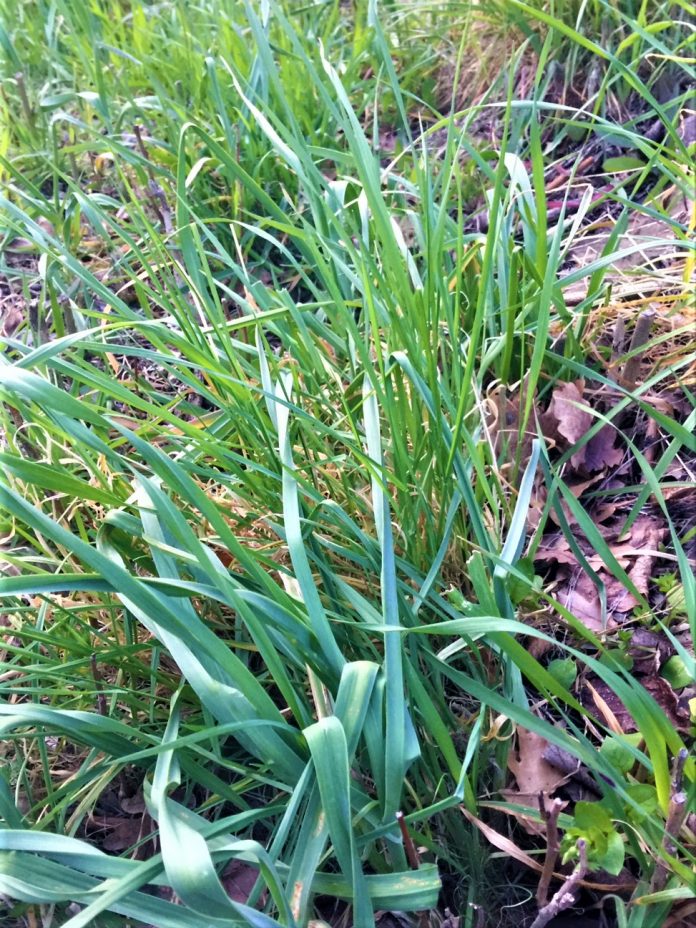by Alessandra Ressa
April is the wild garlic month and you can find this healthy and delicious food growing everywhere in Carso. Sunny fields with moist soil are the ideal combination but you will often find it sprouting in abundance along walking trails, near vineyards, and, surprisingly, along Trieste’s tram tracks once you reach Scorcola hill.
Picking wild herbs and vegetables, however, should be done with extreme care. The smallest mistake can cause hospitalization and even death. So here’s how to recognize wild garlic and how to use it in your kitchen.
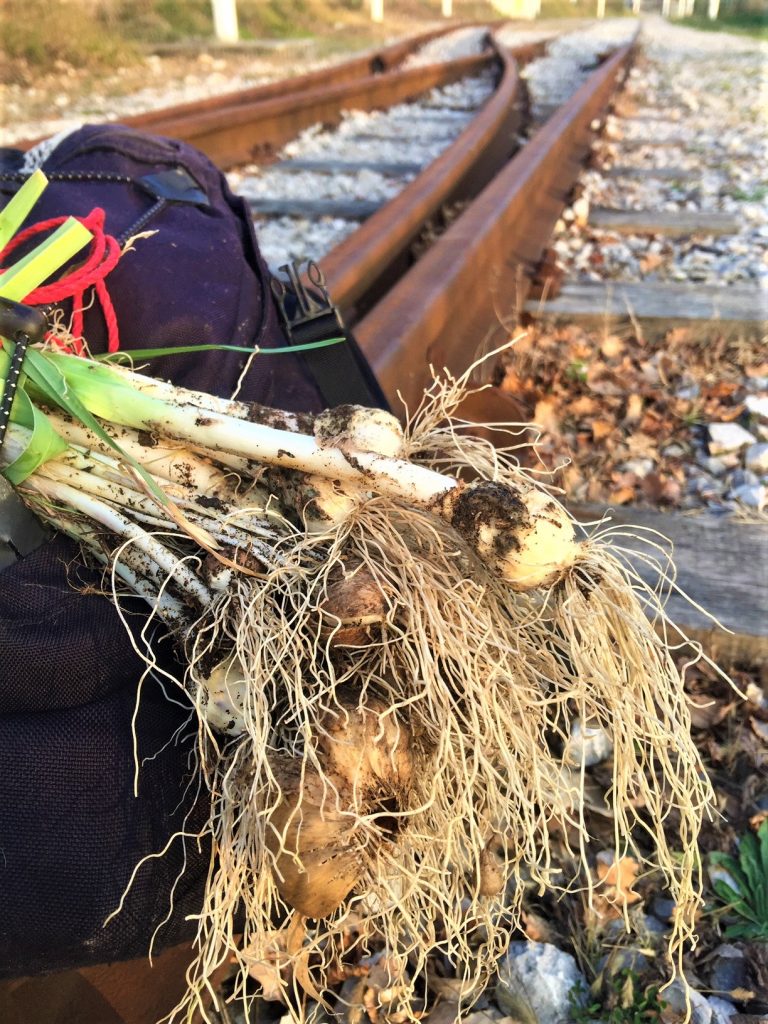
Although often confused with wild onion as the two plants tend to look and smell alike (even botanists and seasoned foragers occasionally disagree on precisely how to classify these wild versions, both edible) wild garlic has dark green leaves that look very much like leek.
Unlike leek, however, it has a white bulb that is sometimes difficult to pull out. By pulling too hard, or if the soil is not soft enough, you may end up with the upper part of the plant, which is as delicious.
To make sure the plant is edible you will need to smell it. If it doesn’t have a smell, throw it away and wash your hands. There is a deceiving type of wild lily that looks very similar but has no smell, and it is dangerously poisonous. But if you are accustomed to the scent of the cultivated species, the smell of wild garlic will be unmistakable, if slightly milder. If in doubt, scratch and smell the bulb. If you are still unsure, check with a botanist and, most importantly, don’t eat it.
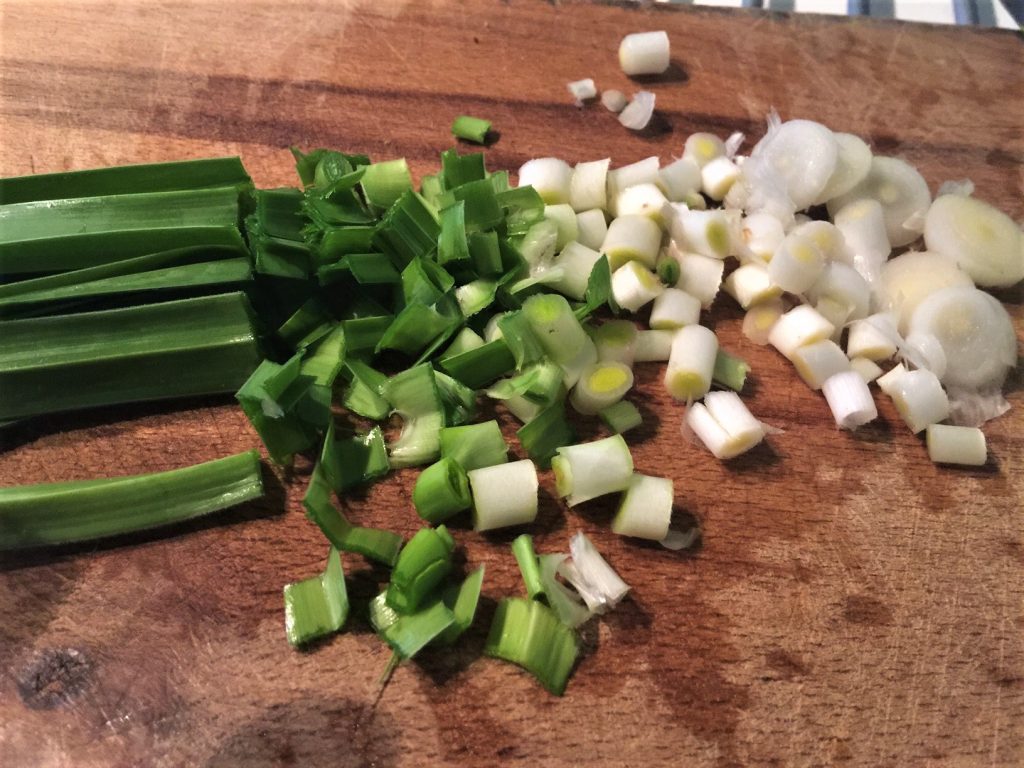
Leaves of wild garlic are thick and leathery, bulbs are usually covered with a dark layer to be removed together with roots before cooking. If big enough, bulbs will have somewhat recognizable cloves.
Small ones will look more like spring onions. You can eat both bulb and leaves. The flavor, a mixture of onion and garlic, is less intense than the regular cultivated one, so you will need larger amounts to spice up your dishes. Incredibly, it is very easy to digest and is appreciated even by non-garlic eaters.
In May, the plants bloom with one single crown semi-spherical shape consisting of several small white flowers. You can also plant some of the bulbs and wait for them to bloom, then pick the seeds and plant more. They are perennial, thus will last a long time in your garden or vase. Being Carso plants, they are resistant to wind and snow.
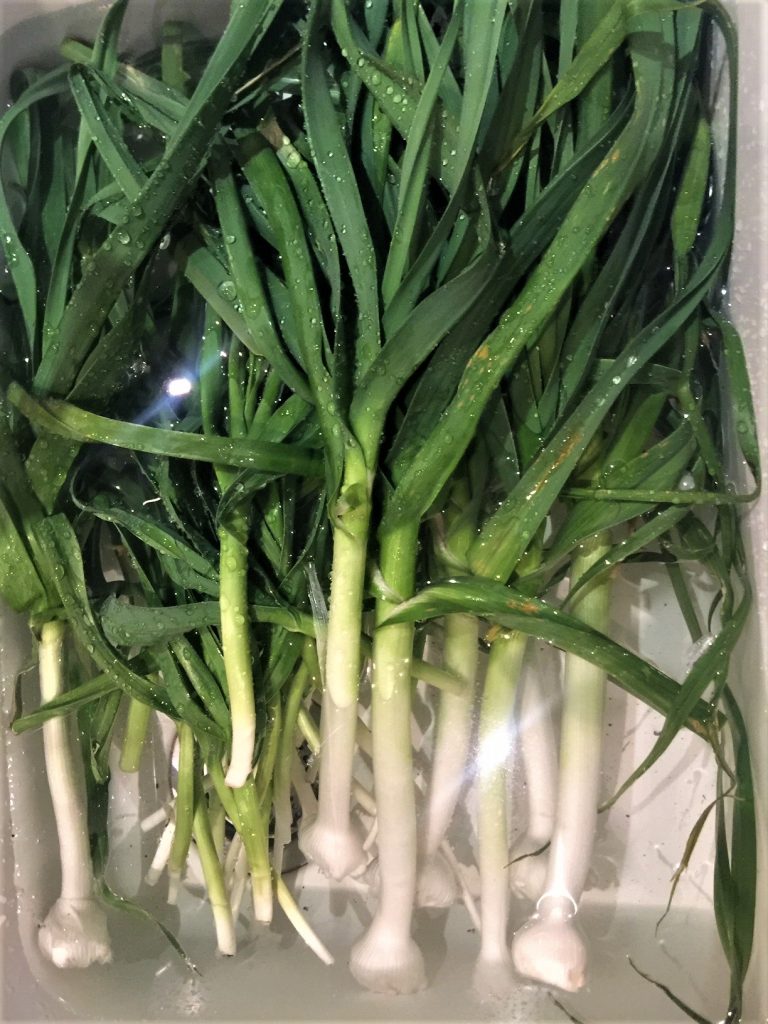
Since it can be preserved in the freezer whole and the leaves can be dried, I use wild garlic in my kitchen nearly all year long. In risottos, lasagnas, frittatas and tomato sauce it really makes a difference.
Stir-fried dishes both vegetarian and traditional style taste a lot better if you add abundant chopped wild garlic.
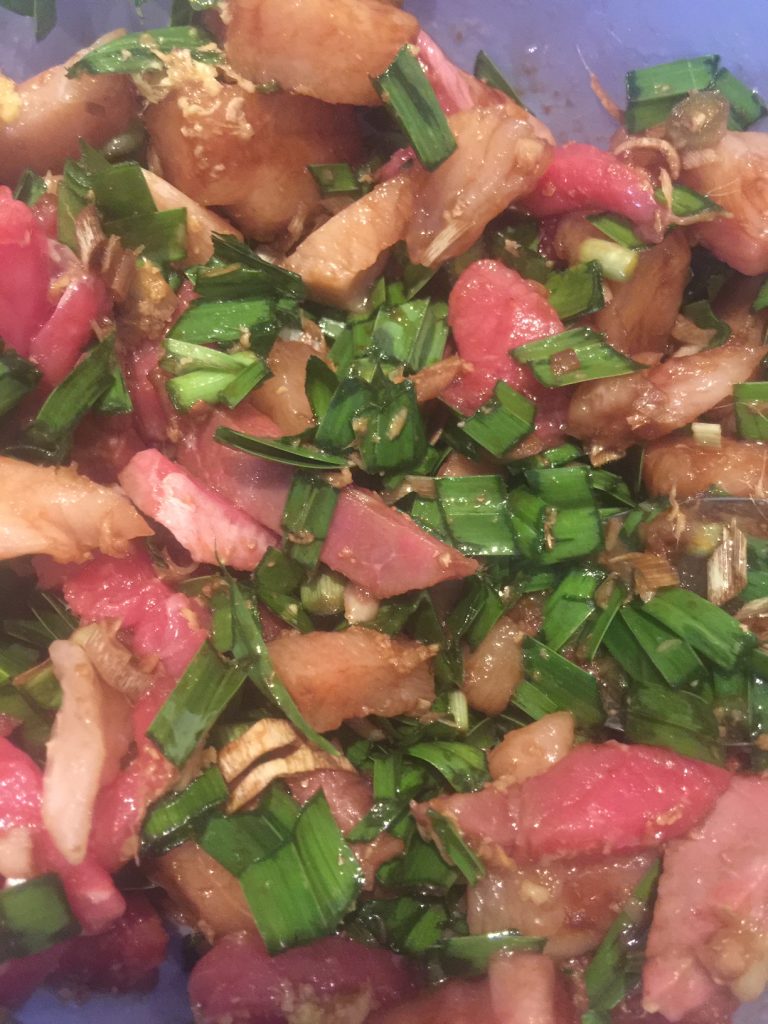
I also use garlic in fritters, Chinese dumplings and in my super simple special kid-proof recipe, meat wild garlic rolls. Meat wild garlic rolls are actually my emergency dish when I have no time for cooking a meal from scratch. I often prepare these in advance and freeze them. Then I simply transfer them from the freezer to the oven and they are ready in 30 minutes. They are quick, they have veggies that otherwise my kids would never eat, and they are only made with local ingredients.
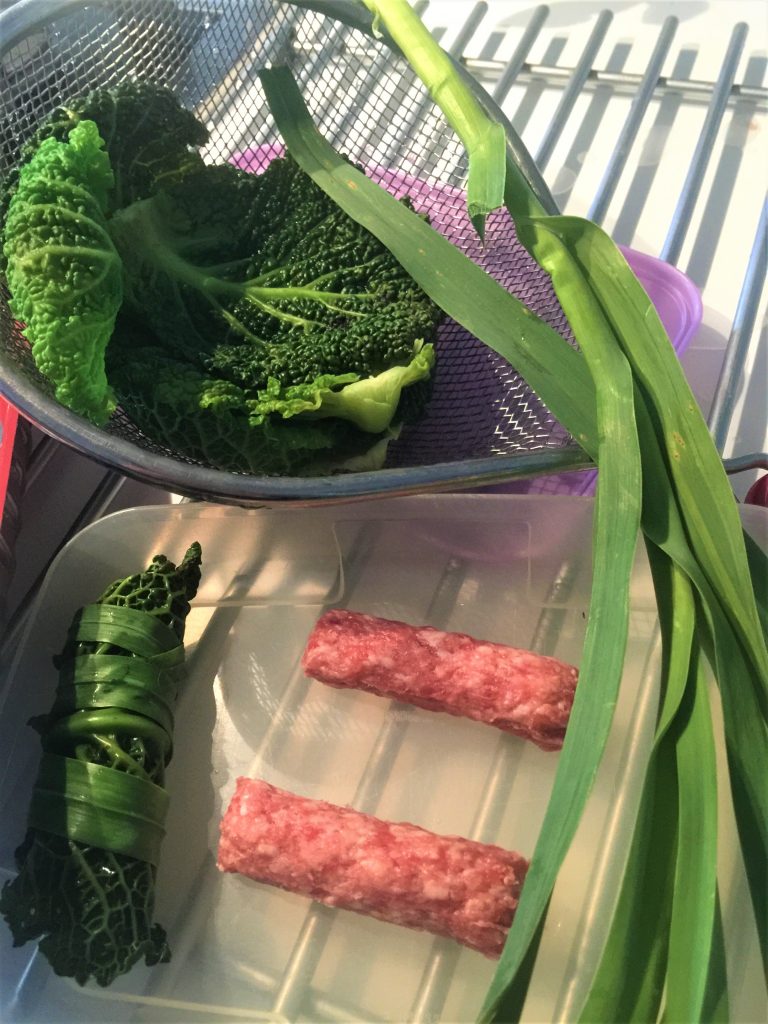
You will need:
- Trieste’s typical civapcici or other sausage. Seitan vegetarian sausages are just as good
- savoy cabbage (organic, small size)
- whole wild garlic leaves
Separate and boil the savoy cabbage leaves in salted water until very tender. Make sure they don’t break. Roll the sausage in the cabbage leaf, then seal the roll by wrapping one long raw garlic leaf around it. Bake in pre-heated oven at 220° C for about 20 minutes (10 minutes longer if frozen). Serve hot with rice.

Wild garlic, like cultivated garlic, is widely known for its antibacterial, antibiotic and possibly antiviral properties, and contains vitamins A and C, calcium, iron, phosphorus, sodium and copper.
Studies have also shown that it may help reduce blood pressure, thereby reducing the risk of stroke and heart disease.With or without bulb, it will last in your fridge for several weeks. If you decide to dry the leaves, make sure to keep them hanging in a dark place to preserve the intense green color.

























